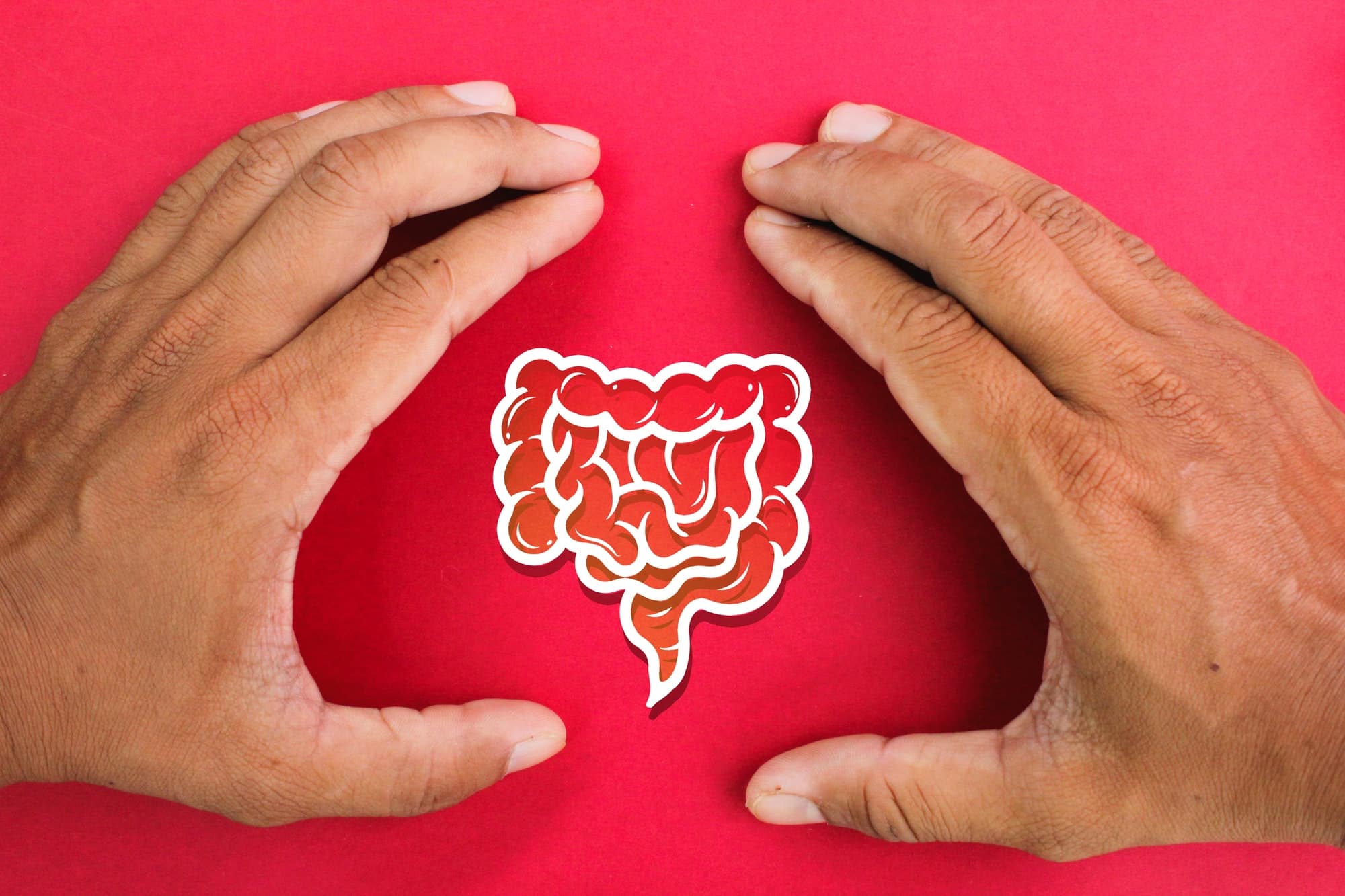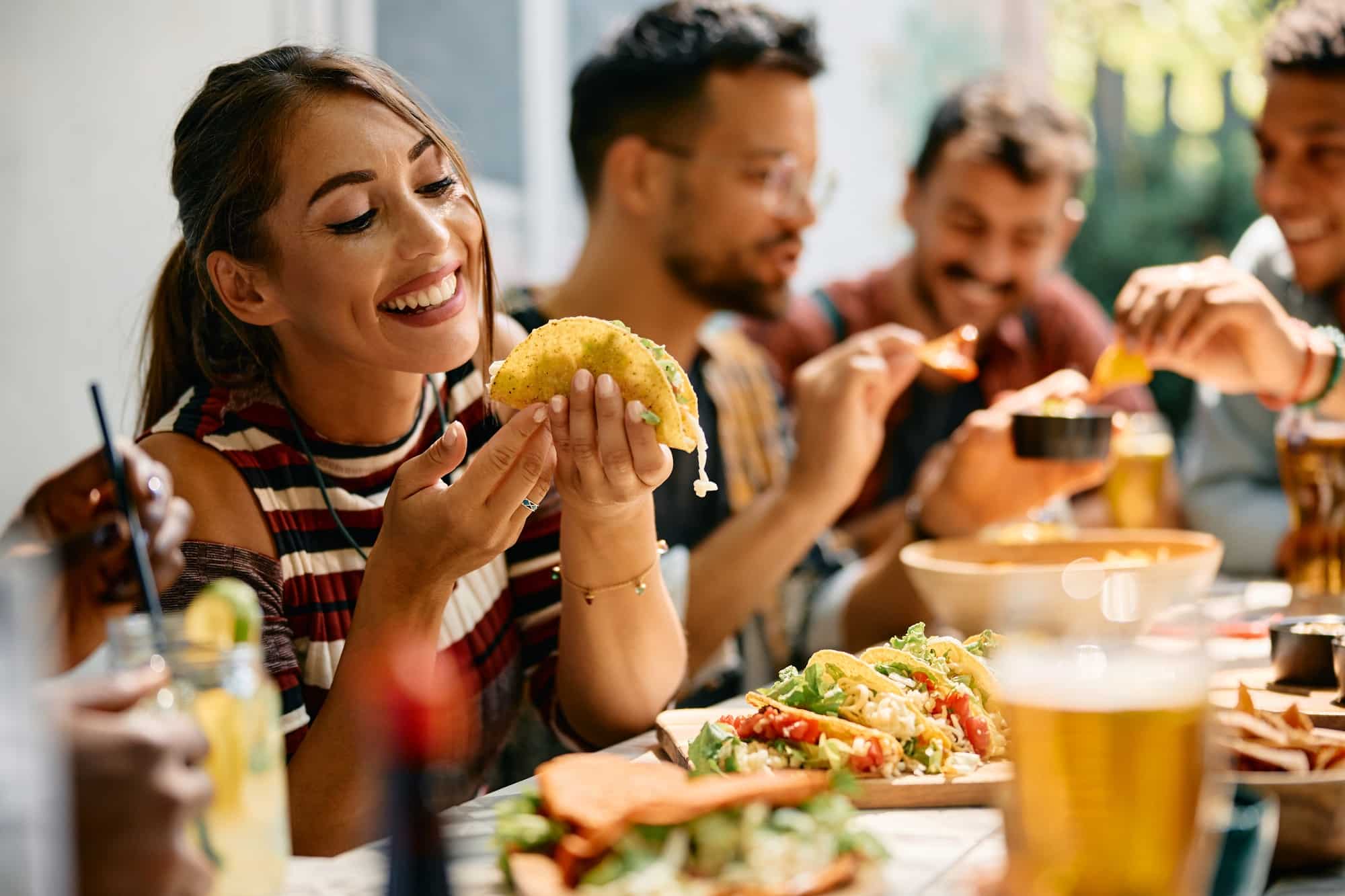In today’s fast-paced society, the traditional midday pause for a shared meal often succumbs to solitary consumption or skipped repasts altogether. Yet, emerging data suggests that breaking bread with companions boasts a plethora of health advantages, extending well beyond the mere intake of nutrients. This article examines the tangible health benefits of having lunch with friends, which have been linked to improved dietary choices, enhanced mental health, and a bolstered sense of community. Additionally, fostering a positive company culture through communal meals can enhance employee motivation and contribute to a sense of pride in the workplace.
These communal experiences satiate the appetite and nourish the psyche by fostering connections between individuals, underscoring the inherent value of human connectivity. As we explore the intersection of nutrition, psychology, and social science, it becomes evident that the implications of such a simple act are profound, potentially influencing public health strategies and personal wellness routines alike.
Health Benefits of Eating Lunch with Friends: Key Takeaways
Having lunch with friends enhances social connections and boosts mental well-being.
Eating meals with others promotes healthier eating habits, increases nutrient intake, and helps control portion sizes.
Eating with others enhances gut health, boosts the immune system, and reduces the risk of gastrointestinal disorders.
Social eating stimulates cognitive function, enhances memory and learning, reduces the risk of cognitive decline, and improves mental focus and attention.
A free lunch can boost morale, enhance team bonding, and increase employee retention.
Health Benefits of Eating Lunch with Friends Table of Contents
Social Connections Enhanced
This video discusses the importance of social well-being, connections, relationships, and interactions with others.
The Importance of Social Eating
Social eating is an essential aspect of human interaction, playing a significant role in our overall well-being. Sharing meals with others brings people together, fostering a sense of community and promoting social bonding. Whether it’s a family dinner, a lunch break with colleagues, or a gathering with friends, these shared experiences are vital for our mental and emotional health.
Social eating can significantly improve employee relationships, engagement, and inclusiveness in the workplace. When colleagues come together for a team lunch, it creates an opportunity for open communication, collaboration, and the building of stronger interpersonal connections. This sense of camaraderie can lead to a more cohesive and productive work environment, enhancing overall well-being.
Moreover, social eating can reduce the personal time and costs associated with heading back to the office, making it a practical and enjoyable way to spend meal breaks. By prioritizing communal meals, we can cultivate a culture of togetherness and support, ultimately contributing to a happier and healthier community.
Engaging in the shared experience of the health benefits of having lunch with friends nurtures our bodies. It significantly strengthens our social connections, fostering deeper communal bonds and a sense of inclusion. Sharing a meal transcends mere sustenance, emerging as a vital conduit for enhancing friendships and building social networks. It’s a tradition as old as time, yet its importance is often underestimated in our fast-paced world.
Eating meals with family members is associated with benefits such as improved diet for adolescents, better academic performance and self-esteem for kids, improved cardiovascular health, reduced risk of substance misuse, depression, teen pregnancy, and obesity, and improved physical and mental health for all family members involved.
Communal eating serves as an antidote to isolation, effectively combating the epidemic of loneliness that afflicts many in our society. By sitting down together, individuals engage in a ritual that reaffirms belonging and provides emotional support, which is paramount for emotional well-being. The laughter, stories, and memories created around the dining table are fleeting moments and threads weaving a stronger social fabric. “Eating together is a form of expression that offers a moment of delight, relaxation, adventure, surprise, self-discovery, and romance.” – Paul Levy. The benefits of such social engagement extend beyond the immediate pleasure of good company. Studies indicate that individuals who frequently eat with others report higher happiness and satisfaction. Through fostering a culture that values togetherness, we can help alleviate the pangs of solitude and ensure a healthier, more connected community.

A woman is holding a coffee cup and enjoying a stress-free, peaceful mood and well-being.
Mental Health Benefits Boost the Health Benefits of Having Lunch With Friends
While reinforcing social bonds and the health benefits of having lunch with friends significantly contribute to community cohesion, it also plays a pivotal role in enhancing individual mental well-being. Engaging in the simple yet profound act of dining with peers is a cornerstone in loneliness prevention, a pervasive issue that can profoundly affect one’s emotional state. The convivial atmosphere of shared dining experiences fosters social engagement benefits, allowing individuals to connect, share, and empathize, thus nurturing their emotional well-being.
Shared mealtimes can develop and reinforce healthy eating habits, positively influencing children’s eating behaviors.
Moreover, coming together over a meal transcends mere sustenance; it is an opportunity for relationship building, creating a network of support that is invaluable in navigating life’s challenges. The reciprocity of listening and being heard, giving and receiving support, contributes to mental health improvement, providing a buffer against the stresses of daily life. Regular social interaction, particularly in the context of a shared meal, can help alleviate the symptoms of depression and anxiety, contributing to a more resilient and fulfilled individual. Therefore, prioritizing communal lunches is a social nicety and a vital ingredient for a healthier, happier mind.
Benefits of Taking a Lunch Break
Taking a lunch break is essential for both employees and employers. It allows employees to step away from their work, recharge, and refocus. A study published in the journal Cognition showed that performance tends to decline throughout a task. Taking breaks, including at lunch, can help counteract this decline, leading to improved productivity and job satisfaction.
Moreover, taking time to eat away from work encourages more mindful eating. When we step away from our desks and engage in a relaxed meal, we are likelier to make better food choices and enjoy our meals. This practice can significantly improve overall diet quality as we become more attuned to our hunger and fullness cues.
Incorporating regular lunch breaks into the workday benefits individual employees and contributes to a healthier and more productive workplace. Employers can support their team’s well-being by promoting the importance of meal breaks and creating a more positive and balanced work environment.
Healthier Eating Habits
Gathering for lunch with friends strengthens social ties and encourages healthier eating habits, as individuals tend to make more nutritious food choices in the company of others. This shared dining experience inherently promotes portion control, as people often mirror their peers’ eating pace and quantities, leading to more moderate consumption. Such group meals foster a collective mindfulness about the food being eaten, which can positively influence nutrient intake. Dining in a group setting can also lead to healthier food choices, as the social environment encourages mindful eating.
Another health benefit of having lunch with friends is that it also plays a role in obesity prevention. The social interaction and slower eating pace allow the body’s satiety signals to register, reducing the likelihood of overeating. Additionally, communal meals often include a variety of dishes, encouraging a balanced diet rich in different nutrients and fibers, which are crucial for digestion enhancement.
Moreover, the diversity of foods at group gatherings can positively affect the gut microbiota. A varied diet contributes to a more robust and diverse bacterial environment in the gut, which is essential for overall health. In serving others, one can facilitate these benefits by organizing and participating in social lunches that prioritize nutritious options and mindful eating patterns.

Social dining significantly enhances gut health.
Nutrition and Productivity
Nutrition has a direct impact on productivity. A healthy diet improves cognitive performance, energy levels, and overall well-being. Healthy food options in the workplace can boost employee morale, increase company retention rates, and attract new talent. When employees have access to nutritious meals, they are more likely to maintain steady energy levels throughout the day, enhancing focus and efficiency.
Offering free meals or healthy food options in the office can promote healthy eating habits and reduce reliance on unhealthy fast food. This not only benefits physical health but also has a positive impact on mental health. A well-fed and healthy workforce is more productive, as timely meals in the office can remove anxiety and stress about what to eat and from which place.
Employers can create a supportive environment that encourages overall well-being by prioritizing nutrition and offering healthy food options. Investing in employee health can lead to a more motivated, engaged, and productive team, ultimately benefiting the organization.
Gut Health Improvement
Beyond influencing healthier eating habits and obesity prevention, social dining also significantly enhances gut health by promoting a diverse and balanced diet. Enjoying and connecting with others while consuming nutritious foods can contribute to a healthy lifestyle. Sharing meals with others often leads to the consumption of a variety of foods, which can contribute to:
Gut Microbiota Diversity
Exposure to different cuisines and ingredients increases the variety of bacteria in the gut.
A rich and diverse gut microbiome is linked to better health and reduced risk of chronic diseases.
Immune System Enhancement
A healthy gut contributes to a robust immune system, as many immune cells reside in the gut.
Social meals can lead to improved immune responses through better gut health.
Nutrient Absorption and Digestive Health
Eating a varied diet improves nutrient absorption, which is crucial for overall well-being.
Eating with others can slow the pace of meals, aiding digestion improvement and preventing gastrointestinal disorders.
Understanding the importance of gut health is essential for those committed to serving and nurturing others. Encouraging communal eating not only fosters social bonds but also contributes to the physical well-being of the community by supporting digestive health and preventing ailments related to the gut.

Cognitive Function Stimulation Through Mindful Eating
Engaging in social meals nurtures our social bonds and stimulates cognitive function, enhancing memory, learning, and the ability to focus. Conversing with companions over lunch can improve memory retention as individuals recount stories, share knowledge, and exchange ideas. This dynamic interaction enriches the brain’s capacity to encode and recall information.
Moreover, dining with others has been associated with increased problem-solving abilities. The diversity of perspectives offered in group settings can challenge one’s thinking processes, fostering cognitive flexibility and creativity enhancement. Discussions during these social gatherings often require individuals to consider various viewpoints and develop solutions collaboratively, effectively exercising the brain’s problem-solving muscles.
Additionally, the communal experience of sharing a meal can lead to enhanced focus and attention. The positive social stimuli help to engage the brain’s attentional systems, maintaining cognitive sharpness. Regular engagement in such stimulating environments is a proactive step in cognitive decline prevention, particularly for older adults. Enjoying healthy foods with others, such as family, friends, or co-workers, can contribute to a healthy lifestyle, emphasizing the social and enjoyment aspects of connecting through nutritious eating.
Ultimately, lunch with friends is more than a pleasurable pastime. It is a vital activity that supports cognitive health, encourages creativity, sharpens focus, and preserves the mind’s agility. For those who serve others, promoting these shared meals can be a powerful tool in enhancing the cognitive well-being of communities.

Emotional Support Systems
While the cognitive benefits of social meals are well-documented, the emotional support provided by shared dining experiences is equally significant in bolstering mental health. Lunch with friends is not merely an occasion to savor food but a vital opportunity to foster an emotional support network crucial for our psychological well-being. Breaking bread together inherently combats loneliness, reinforces a sense of belonging, and nurtures mental health benefits through emotional bonding. Frequent family meals also play a crucial role in preventing substance abuse, promoting mental well-being, and preventing weight struggles, benefiting individuals at any age.
Loneliness Prevention
Recognizing signs of isolation in others
Initiating and scheduling regular meal gatherings
Creating inclusive environments where everyone feels welcomed
Emotional Bonding
Sharing personal stories and challenges
Offering empathy and understanding in a safe space
Celebrating each other’s successes and milestones
Support Network
Building a reliable circle of friends for mutual aid
Encouraging the exchange of advice and resources
Strengthening ties that provide a safety net in times of crisis
For those who serve others, facilitating these shared meals can be a powerful tool to enhance community mental health, providing a platform for individuals to connect, share, and support one another in their journey through life.

Reduce stress and anxiety by sharing meals with friends.
Stress and Anxiety Reduction
Regular social interactions, such as sharing meals with friends, have been proven to diminish stress and anxiety levels in individuals significantly. These gatherings serve as coping strategies for stress and anxiety, offering a time to unwind and connect with others in a relaxing environment. Hosting a dinner party can add an extra layer of excitement and provide an opportunity to cook something special for friends. The role of social support in managing anxiety is crucial; friends can offer a listening ear and help put life’s challenges into perspective.
Incorporating mindfulness techniques for reducing stress, such as deep breathing and being present in the moment, can enhance the calming effects of social dining. Exercise, too, is a natural stress reliever and a post-lunch walk with companions can double the stress-reducing benefits. Acknowledging the impact of stress on physical health is essential, and taking proactive steps to manage stress through social interaction is both enjoyable and beneficial.
Emotions Felt During Social MealsPotential Health OutcomesJoy and ContentmentLowered blood pressureBelonging and SupportImproved immune system functioningRelaxation and PeaceReduced risk of chronic diseasesAmusement and LaughterEnhanced mental well-beingGratitude and AppreciationStrengthened emotional resilience.
Community Bond Strengthening Through Communal Meals
Sharing meals with friends and acquaintances often catalyzes strengthening community bonds, fostering a sense of unity and mutual support within diverse groups. Shared meals are not merely about eating; they are rich opportunities for community engagement and developing neighborly connections. When individuals come together to share a meal, they partake in an age-old tradition fundamental to fostering relationships across cultural and social divides.
Community Engagement
Encourages participation in local events and initiatives
Promotes understanding and appreciation of cultural diversity
Inspires collective action toward community welfare
Neighborly Connections
Strengthens ties with those who live nearby, enhancing neighborhood security
Facilitates the exchange of support and resources within the community
Reduces feelings of isolation, particularly among the elderly or those new to the area
Fostering Relationships
It provides a relaxed setting for meaningful conversations
Builds trust and camaraderie through shared experiences
Helps establish a network of support for times of need
For those desirous of serving others, initiating and partaking in shared meals can be a profound way of reducing isolation and weaving the social fabric of our communities tighter.

Technology in social interactions often overshadows the unique benefits of face-to-face communication.
Technology Vs. Face-To-Face Interaction
In the digital age, the prevalence of technology in social interactions often overshadows the unique benefits of face-to-face communication. The benefits of face-to-face interaction are manifold; they foster deeper connections and allow for the exchange of nonverbal cues, reinforcing the importance of physical presence in building and maintaining relationships. Sharing a meal, for instance, is not merely about sustenance but also the emotional nourishment derived from direct human contact.
The impact of technology on relationships can be complex. While digital tools keep us connected over distances, they may contribute to the drawbacks of virtual communication, such as a lack of emotional depth and misunderstanding. An over-reliance on screens can lead to a decrease in the quality of personal interactions and a sense of isolation.
Understanding the balance between technology and in-person interactions is pivotal for those who wish to serve others compassionately. Balancing technology and in-person interactions involves recognizing when to put aside digital devices to engage fully with individuals, thus enhancing the well-being of both parties involved. Such equilibrium ensures that technology is a bridge rather than a barrier to fulfilling human connections.
Frequently Asked Questions
How Does Having Lunch With Friends Impact Workplace Productivity and Job Satisfaction?
Sharing meals symbolizes unity; in the workplace, lunch with colleagues can enhance team bonding, facilitate communication improvement, and reduce stress, thereby boosting job satisfaction and fostering an environment ripe for creative collaboration.
Can Social Lunches Help in Managing Dietary Restrictions or Food Allergies Among Peers?
Social lunches facilitate peer support, allergy awareness, and mindful eating by allowing for collaborative menu planning and food education, fostering an environment conducive to managing dietary restrictions within a community dedicated to service.
Are There Any Cultural Differences in How Lunch With Friends Affects Health and Social Benefits?
Cultural norms shape communal eating practices, intertwining festive traditions and social rituals with health perceptions. Such gatherings can foster communal well-being, embodying the heart of service through shared culinary experiences.
What Role Does the Physical Environment or Setting of the Lunch Play in Enhancing the Health Benefits of Social Dining?
The physical environment, including ambient noise, seating arrangements, natural lighting, space design, and meal presentation, significantly influences the psychological and physiological aspects of social dining experiences.
How Does the Frequency of Having Lunch With Friends Correlate With Long-Term Relationship Satisfaction and Stability?
Evaluating relationship longevity reveals that frequent social support, such as sharing meals, positively influences friendship quality, satisfaction metrics, and emotional bonds, which are pivotal for sustained relationship satisfaction and stability.
Conclusion
In conclusion, the tapestry of communal dining weaves together the threads of social, mental, and physical health, creating a fabric of well-being that envelops individuals in its warm embrace. Each shared meal serves as a symbolic hearth, at which the fire of companionship kindles the spirit, nourishes the body, and fortifies the mind. This age-old ritual remains a cornerstone of holistic health, illuminating a more connected and harmonious existence.









